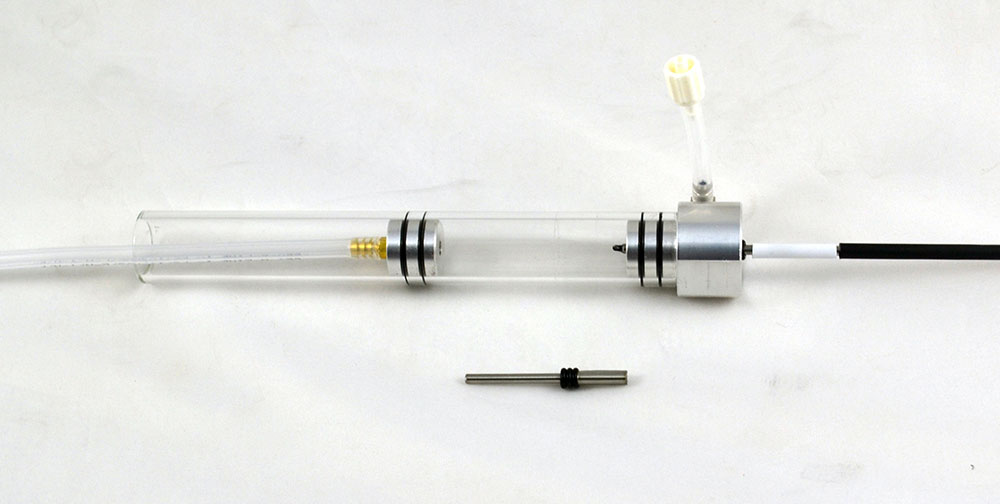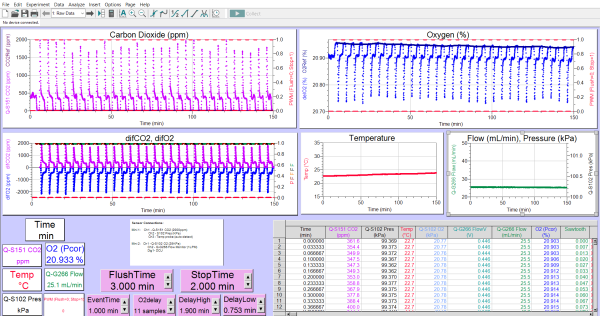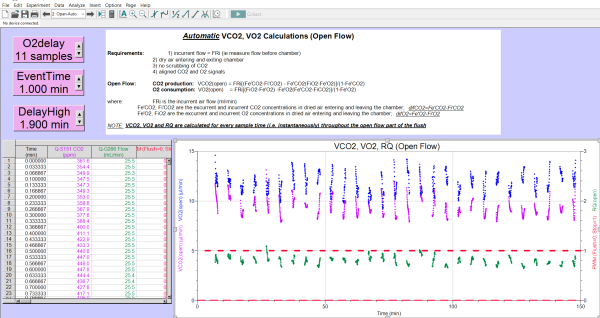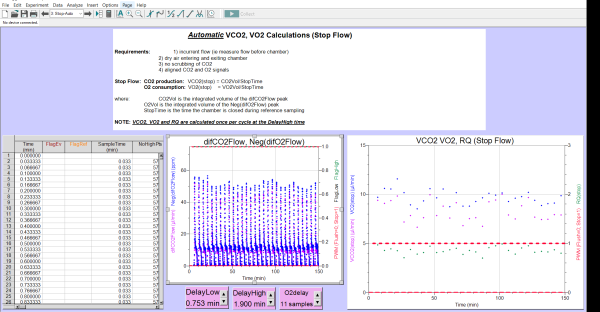描述
開放流量呼吸測量適用於較大或較活躍的動物,而對於測量 pO2 的非常小的變化(例如小昆蟲在呼吸過程中),系統可以採用停止流量配置。在後者中,流動會停止一段時間,以允許 CO2 累積並減少 O2。隨著隨後氣流的打開,氣體被掃過感測器進行測量。透過軟體中使用者指定的時間段,可以自動開啟和停止通過動物腔室的流動。該套件的其他潛在應用包括測量水懸浮液上方氣體頂部空間的代謝。例如,測量酵母發酵。 Q-Box RP1LP 可用於測量幾乎任何生物系統的 O2 消耗率和 CO2 產生率,其中 pCO2 和 pO2 的變化在分析儀測量的範圍內。
Q-Box RP1LP 低範圍呼吸包是模組化的,可以輕鬆更換組件以適應其他應用,例如土壤呼吸或植物光合作用。若要測量哺乳動物等較大且較活躍的動物的呼吸作用,請參閱Q-Box RP2LP 高範圍呼吸作用套件。
特徵
- 模組化氣體交換測量系統
- 包括 CO2 和 O2 分析儀
- 組件可與其他 Q-Box 套件互換
- 自動計算 VCO2 和 VO2
- 開啟和停止流量測量
- 裝在堅固的盒子裡,方便運輸和安裝
- 在實驗室或現場使用(使用選購電池組)
應用
- 昆蟲呼吸測定法
- 小動物呼吸測定
- 發酵測量(頂空)
- 水生呼吸(頂空)
- 大氣監測
- 土壤樣本呼吸作用
- 微生物呼吸







